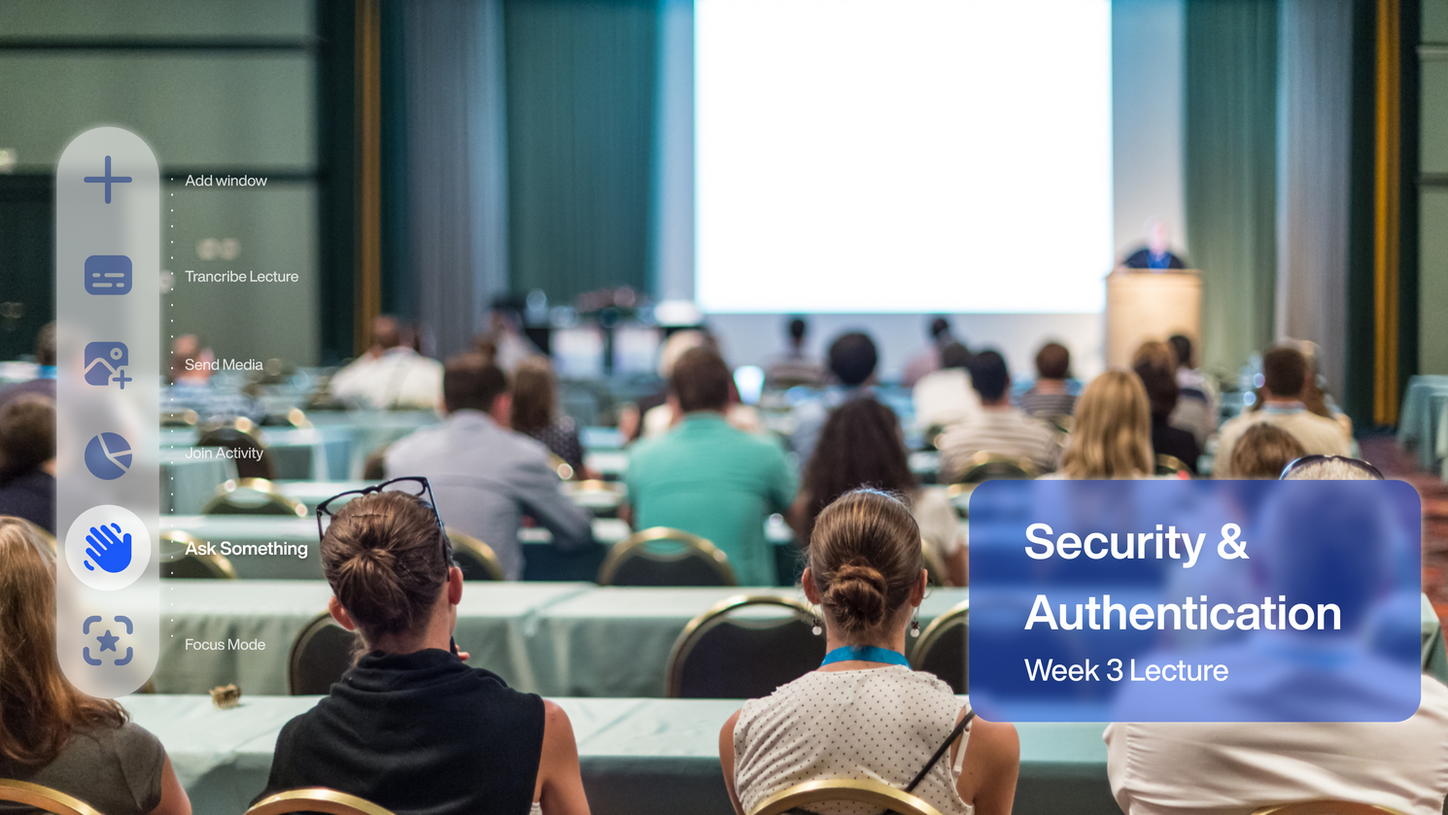The Spark
Imagine walking into a lecture hall on a rainy Monday morning. Coffee in hand, you brace yourself for a two-hour session on Security and Authentication.
Ten minutes in, you check your phone. Across the room, half the class is doing the same. The lecturer’s voice fills the air, but you know only a small fraction of this is going to stick.
I had been in that situation too many times. The content wasn’t the issue, the way we experienced it was. That’s when I began asking myself:
What if lectures could feel alive? What if students and lecturers could actually communicate in real time? What if learning could be focused, interactive, and dare I say fun?
That question sparked the idea for the Mixed Reality Classroom.


Mixed Reality Classroom





A New Dimension of Classroom Interaction
Understanding the Challenge

I started by speaking to the people who knew the problem best, students and lecturers. Their stories echoed each other.
Students admitted they struggled to stay engaged, even when the topic was interesting. Shyness stopped many from asking questions, and when they got lost, they stayed lost until the end of class.
Lecturers confessed they were often teaching in the dark. Were students listening? Were they confused? They wouldn’t know until the exam results came in far too late to make adjustments.
The challenge was clear :
Focus was fragile.
Communication was one-sided.
Feedback was delayed.

Finding the Opportunity
Finding the Opportunity
Mixed reality headsets felt like the perfect stage, not for flashy 3D gimmicks, but as a bridge between people. The aim wasn’t to replace the lecturer, but to amplify them, giving both sides tools to make every minute count.
From research and user interviews, three core design goals emerged:
-
Keep students engaged through gentle, non-intrusive focus tools.
-
Open two-way communication so every voice could be heard.
-
Give lecturers live insight into attention, mood, and participation.

Bringing the Vision to Life

Students could open shared notes, join the class chat, or start an activity without losing track of the lecture
Quick Controls

Lecturers could see real-time engagement levels, average attention spans, and even overall class mood.
Live Attention Metrics

Students could ask questions anonymously, react with emojis, or give instant feedback without interrupting.
Class Chat & Reactions

Visuals appeared in a student’s field of view exactly when they were needed.
Shared Diagrams & Notes

Reduced visual clutter, keeping students anchored on the lecture content.
Focus Mode
Designing with the People Who’d Use It
This wasn’t a design made in isolation. I involved students and lecturers from the start.
Students loved being able to ask questions without public speaking anxiety. They also valued quick, subtle ways to react without breaking the flow.
Lecturers saw the attention metrics as a breakthrough. Finally, a way to adjust mid-lecture instead of reading end-of-term surveys.
Their feedback shaped every decision, ensuring the design was practical, human & grounded in reality.

A Lecture Reimagined
Back to that Security and Authentication class, only now, it’s powered by the Mixed Reality Classroom.
The lecture starts. Students see a subtle title overlay. As the lecturer speaks, attention metrics update. She notices focus dipping and shifts her pace.
A student, unsure about a slide, taps into the class chat: Can you explain that again? The lecturer sees it instantly and clarifies, saving dozens of others from silent confusion.
A shy student sends a thumbs-up reaction to show he’s following along. A diagram pops into view alongside the content, making the explanation click instantly.
Instead of a room full of half-distracted listeners,
the space feels alive.
Looking Ahead
This project reinforced a truth: in education, technology works best when it strengthens human connection, not replaces it.
The Mixed Reality Classroom isn’t about dazzling graphics. It’s about engagement. It’s about turning passive listening into active participation.
The next step? Building a functional prototype, testing it in live lectures, and measuring its impact on focus, participation, and retention.
Because learning should never feel like a chore. It should feel like an experience worth showing up for.







